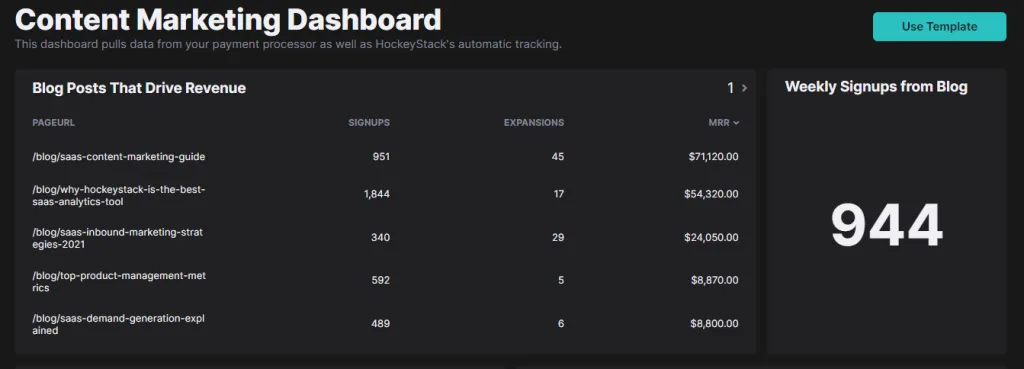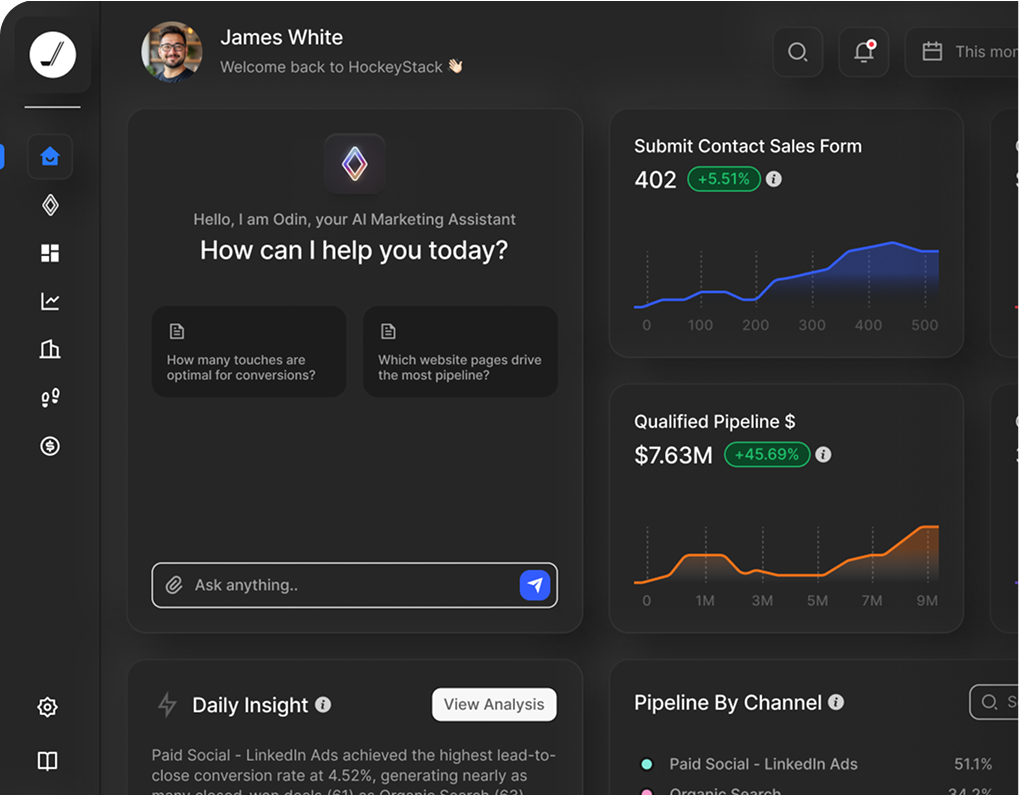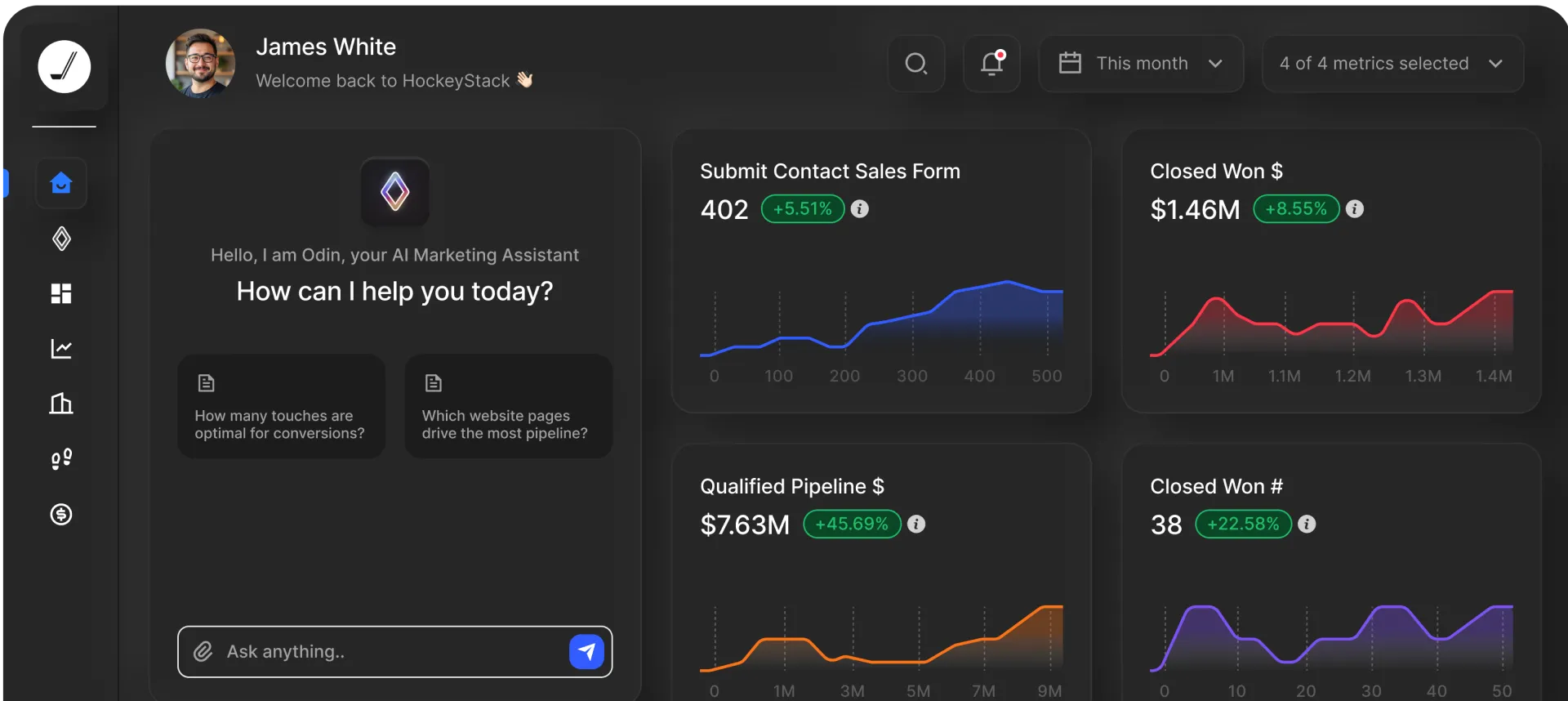Understanding Different Attribution Models and When to Use Them

Understanding Different Attribution Models and When to Use Them

Summary:
- Modern B2B buyer’s journeys are typically long and complex, spanning multiple channels, touchpoints, and stakeholders.
- Attribution modeling frameworks assign credit to different touchpoints, enabling revenue teams to determine which activities generate pipeline and revenue.
- This guide breaks down two primary categories of attribution modeling: rule-based and data-driven. Rule-based attribution models—including first-touch, last-touch, linear, time-decay, and position-based—are deterministic and easier to implement. Data-driven attribution models use AI algorithms and statistical models to uncover patterns and measure contribution from actual behavior.
- Each attribution model has benefits and limitations. It’s important to consider sales cycle length, journey complexity, and resource capacity before selecting which one to implement.
Today’s customer journey is anything but linear.
Prospects don’t just see an ad and make a purchase—they visit your website, read a few of your emails, follow you on social media, and maybe come back a week later after reading a blog post.
With so many touchpoints, it’s hard to connect the dots and figure out which are driving results and which are dead weight. And with limited budgets and resources, you can’t afford to over-invest in every channel.
That’s where attribution modeling comes in. Instead of chasing data, attribution modeling gives you a clear roadmap of how each touchpoint influences your customer’s decision to buy.
Check out how you can use attribution modeling to understand what’s actually moving the needle in your business.
What is Attribution Modeling?
Modern buyers rarely convert after a single interaction with your brand. Instead, they encounter multiple touchpoints—from social media ads to email campaigns and television ads—before they decide to purchase.
Attribution modeling is a framework that marketers use to assign credit to these different touchpoints in the customer journey so they can better understand which marketing actions are responsible for conversions.
There are two main attribution model categories.
Rule-Based Attribution Models
Rule-based attribution models use predetermined rules to assign credit to different touchpoints. These models are popular because they’re easier to set up and understand compared to more complex, data-driven alternatives.
Below are some common types of rule-based attribution models:
- Last-click attribution: This model gives all the credit to the last touchpoint that happened before the purchase.
- First-click attribution: This is the reverse of last-click attribution—it gives all the credit to the very first interaction a customer had with your brand.
- Linear attribution: In linear attribution, equal credit is given across all marketing touchpoints, regardless of when they occurred.
- Time decay attribution: Gives more credit to touchpoints that are closer in time to the purchase. The further away an interaction is from the conversion, the less credit it gets.
- Position-based attribution: Position-based attribution gives more weight to the first and final touchpoints, with the outstanding credit going evenly across any touchpoints in the middle.
While rule-based models offer a good starting point, they may not always capture the nuances of a complex, multi-touch journey.
In some cases, it’s a good idea for businesses to customize them further and assign differential weights based on factors like customer representative seniority or the level of engagement a customer showed at each touchpoint.
For instance, attending a webinar might be weighted more heavily than simply clicking on a paid ad, due to the higher level of effort and interest required.
Data-Driven Attribution Models
Data-driven attribution models rely on statistical analysis and machine learning algorithms to assign credit to each touchpoint, making them much more advanced than rule-based models.
Using actual customer behavior data, these models analyze thousands of customer journeys to identify patterns.
These models can also reveal hidden patterns and interactions that rule-based models might overlook. Instead of relying on assumptions, they use hard data to allocate credit based on what’s actually happening in the journeys.
Netflix is a good example of a company that uses data-driven attribution.
They track user interactions across multiple platforms—whether it’s through their app, website, or smart TV apps.
Then, they leverage models like Markov chains to determine the most impactful touchpoints that lead to subscription renewals so they can personalize show recommendations and improve viewer retention.
While data-driven attribution is often seen as the “gold standard” for multi-touch attribution, these models are more complex and require a significant amount of data to work effectively.
And since they depend on analyzing large volumes of conversions and touchpoints, smaller businesses with limited data may not get as accurate results. They are also more expensive to implement and harder to interpret, as they involve algorithmic estimations that aren’t always easy to explain.
Different Types of Attribution Models
Different attribution models give you different perspectives on how your marketing is driving conversions.
Let’s break down the key types of attribution models and see how they really work:
Single-Touch Attribution Models
Single-touch attribution models attribute the entire credit for a conversion to only one specific touchpoint during the buyer's journey. Whether it’s the first touchpoint or the last, these models focus on finding the most critical moment in driving a sale.
Because of their simplicity, a lot of marketers start with single-touch models when they first begin to analyze campaigns.
First-Touch Attribution Model
The first-touch attribution model gives full credit (100%) for a conversion to the initial touchpoint a customer engages with during their journey.
For example, if a customer first noticed your brand on a billboard, then clicked on a social media ad, and finally made a purchase after visiting your website, the billboard would receive full credit for the conversion.
This model is especially useful for businesses that prioritize brand awareness and top-of-the-funnel marketing. However, it may overlook the contribution of other important touch points further down the line, so it’s most effective when paired with other strategies that track the entire journey.
Last-Touch Attribution Model
The last-touch attribution model gives full credit (100%) for a conversion to the last touchpoint a customer engaged with just before completing a purchase.
It’s one of the most commonly used by default in many marketing analytics platforms because it’s easy to understand and implement.
If a customer clicked on a banner ad, then read a blog post, and finally made a purchase after clicking a link in an email, the email would receive full credit for that sale.
It’s particularly effective when focusing on actions that directly close deals - but it can undervalue earlier interactions that played a big role in moving the customer down the sales funnel.
Click Attribution Model (Similar to Last-Click Attribution)
The click attribution gives full credit (100%) for a conversion to the last click that occurred before the purchase. It’s particularly relevant in PPC advertising, where the goal is to track the exact moment a customer clicks through to buy.
So, if a customer discovered your site through organic search but later clicked on a retargeting ad that led to a sale, the retargeting ad would receive all the credit.
Because of this concept, the model is especially helpful for businesses that want to focus on optimizing their paid advertising campaigns.
PRO TIP: HockeyStack seamlessly connects with your social media platforms and gives insights into your ad campaign performance and how ad spend translates into conversions alongside your other data. You’ll be able to more efficiently measure the effectiveness of your social media advertising efforts.
Here’s an example of what you can achieve when you link HockeyStack with LinkedIn Ads.

Multi-Touch Attribution Models
Unlike single-touch models that focus on just one interaction, multi-touch attribution models provide a much more comprehensive view and give credit to multiple touchpoints throughout the buyer journey.
These models recognize that conversions typically involve several interactions and give deeper insights into how different marketing channels work together to drive results.
Here are some of the most common multi-touch attribution models:
Linear Attribution Model
The linear attribution model allocates credit equally to every touchpoint in the customer journey, treating each interaction with the same level of importance. No single touchpoint is seen as more influential than the others.
So, if a customer interacted with your brand through five touch points before making a purchase—seeing a social media ad, visiting your website, clicking on an email, reading a blog, and finally completing a purchase—each of these would receive 20% of the credit for the conversion.
While the linear model provides a balanced customer journey view, it may not always reflect how important each touchpoint really is, especially if some interactions play a bigger role than others (and they usually do).
PRO TIP 💡: HockeyStack makes it easier to track and analyze essential website metrics like this in real time, such as traffic sources, page views, bounce rates, and user behavior. This type of web analytics provides a clearer understanding of how visitors engage with your site and helps spot areas that can be further optimized.
Time Decay Attribution Model
The time decay attribution model assigns more credit to touchpoints that occur closer to the conversion, based on the idea that interactions later in the customer journey have a greater influence on the final decision to convert.
For example, if a customer first sees a social media post, then reads a blog, and finally clicks an email to make a purchase, the email would get the most credit, followed by the blog, and lastly the social media post.
This model works well for businesses where recency and reminders play a big role in getting conversions. However, like other models, it may downplay the importance of early actions that sparked the customer’s interest in the first place.
U-Shaped Attribution Model
The U-shaped model assigns the majority of the credit to the first and final touchpoints in the buyer journey, with the remaining credit spread evenly across the middle touchpoints.
If a customer first sees a display ad, then reads a blog post, downloads a white paper, and finally makes a purchase after clicking an email link, the display ad and email would receive the bulk of the credit, while the blog and white paper would share the remaining credit.
This model is useful for businesses that want to focus on both raising brand awareness and closing sales.
W-Shaped Attribution Model
The W-shaped attribution model expands on the U-shaped approach by including a third key touchpoint at the "lead creation" stage, giving extra weight to a middle-funnel action.
This model highlights three key stages – the first interaction, the lead creation, and the final conversion.For example, if a customer first interacts with a display ad, submits a lead form, requests a consultation, and finally makes a purchase, the display ad, form submission, and purchase would receive the most credit, with other touchpoints sharing the remaining credit.
This is useful for businesses with intricate sales processes where lead nurturing and qualification are essential steps. It provides a more granular look at how different stages in the funnel contribute to conversions so marketers can optimize for both initial interest and mid-funnel interactions.
Position-Based Attribution Model
The position-based attribution model lets marketers decide how much credit to give to different touchpoints, with the first and last interactions usually getting the most focus.
This is the most flexible model since you can distribute credits based on your specific understanding of the customer journey.
For example, you could assign 40% of the credit to the first interaction that introduced the customer to your brand, 40% to the last touchpoint that led to the conversion, and split the remaining 20% across the middle interactions.
This model is helpful for businesses that want to customize attribution based on their particular sales cycle. You have the freedom to adjust how much credit each stage of the journey gets, so it better matches your customer’s behavior.
PRO TIP 💡: HockeyStack has one of the finest multi-touch attribution models in the industry, and you can get a detailed understanding of how every marketing channel influences your revenue. You can follow customer interactions throughout their entire journey and see which touchpoints are getting the best results.

Choosing the Right Marketing Attribution Model for Your Business
Now that we’ve covered the different types of attribution models, the next step is to understand when to use each one.
Here’s how you should choose the right attribution model for your specific business:
The Length of Your Sales Cycle
If you have a shorter sales cycle—like in e-commerce, where customers often make quick, impulse-driven purchases—a last-touch attribution model may be enough.
You can focus on the final interaction that directly led to the conversion, making it perfect for businesses where the final nudge matters most.
On the other hand, longer or more complex sales cycles, common in industries like B2B software or high-consideration purchases, require a more nuanced approach.
For these, a first-touch model can help you see which channels are best at generating initial interest. Alternatively, multi-touch models like time decay are valuable for tracking how early and mid-funnel interactions nurture leads over time, especially when decision-making involves multiple stages and interactions.
Customer Journey Complexity
For simpler journeys—where customers convert after interacting with just a few touchpoints—a single-touch attribution model, such as first-click or last-click, might be a good pick.
These models focus on key moments in the customer journey and work well for businesses with fewer channels or more direct paths to conversion.
But if your customer journey is more complex and involves multiple interactions across channels like social media, email, paid ads, and website visits, a multi-touch model is a better idea.
Models like U-shaped or W-shaped can help you capture the value of both early-stage awareness and the final conversion efforts, while data-driven models dig deeper into how every touchpoint contributes.
Online and Offline Interactions
When your business operates solely online, tracking customer interactions is relatively straightforward. You can choose from a variety of attribution models and easily track every digital touchpoint, from website visits to email clicks.
But if your business involves both online and offline interactions—like retail stores, events, or call centers—the attribution process gets more complex.
To measure attribution of both types of touchpoints, you need to use a CRM system. With it, you can connect online data (like website visits or email interactions) with offline actions, such as in-store purchases, by using customer IDs, loyalty programs, or unique codes.
Call tracking can also help link phone calls to specific marketing campaigns and bridge the gap between online ads and offline sales, while surveys provide another layer of insight by asking customers directly how they found your brand.
Company Size and Resources
For small businesses with limited budgets, simpler models like last-click or linear attribution are a good starting point.
These models are easier to set up and can be used with free tools like Google Analytics, so you have a basic way to track conversions without having to invest in any advanced resources.
Larger businesses, on the other hand, can take advantage of more sophisticated multi-touch and data-driven models.
With the budget to invest in dedicated attribution platforms like HockeyStack or in-house data science expertise, bigger companies can get deeper insights at their fingertips.
Ultimately, the best attribution model is the one that’s in line with your business goals, customer journey, and resources. No matter your company size, don’t hesitate to experiment with different models and refine your approach over time.
How to Conduct Attribution Modeling?
Attribution modeling involves a systematic process of data collection, analysis, and interpretation.
Let’s walk through the entire process to help you get started:
Define Your Goals and KPIs
The first step in attribution modeling is to clearly define your goals - are you trying to drive more website traffic, generate more leads, or increase conversions?
A set objective helps you decide how to structure your attribution analysis and pick the right model.
The next step is to define the KPIs that will measure your progress.
So, if your goal is to increase website traffic, you’ll want to track metrics like page views and click-through rates. If you're focused on conversions, you’ll look at KPIs like form submissions, email opens, and purchases.
While this may sound obvious, many businesses skip these steps, thinking they don’t need to outline these things. But with a clear framework, you’re one step closer to understanding which data you have to collect and monitor and, ultimately, how each touchpoint contributes to your bottom line.
Choose Your Attribution Model(s)
It's often best to begin with a simpler model like last-click or linear attribution. These models offer an easy way to see how specific touchpoints affect conversions and help you get a basic understanding of your customer journey.
If your sales cycle is shorter and the path to conversion is relatively direct, single-touch models like first-click or last-click may do the trick, particularly for businesses with minimal marketing channels.
For more complex journeys—where customers interact with several touchpoints across different channels—multi-touch attribution solutions are better.
And for companies with both online and offline interactions, you should go with models that integrate both.
Keep in mind that attribution modeling isn’t a one-size-fits-forever solution. Be prepared to experiment with different models and adapt your approach as you collect more data.
Gather and Integrate Your Data
Start with all the data sources that track customer interactions – website analytics, your CRM system, marketing automation tools, and any ad platforms.
And before you integrate, make sure your data is clean, complete, and consistent. This means removing any duplicates, fixing errors, and normalizing data across platforms so you have a unified dataset.
Next, get your data into a centralized location where you can analyze it holistically. Platforms like HockeyStack can be helpful because they help you combine data from multiple sources into a single attribution dashboard, so you can get a birds-eye overview of marketing activities.
With a marketing attribution tool like HockeyStack, you can integrate multiple marketing platforms (like CRMs, ad networks, and social media channels) to gain a full overview of your marketing efforts. You can easily track key performance indicators, analyze trends, and compare your results over time.
Here’s an example of the insights you can gather:

Implement Your Chosen Model
Once you’ve selected the attribution model that best fits your business, it’s time to implement it.
Keep in mind that many marketing platforms, like Google Analytics or Meta Ads, already offer built-in attribution modeling features that make this process easier.
For more complex marketing campaigns or specific analytical needs, you might even consider creating a custom attribution model. It can be especially helpful for businesses with unique customer journeys or multi-channel strategies.
Analyze and Interpret the Results
Find your top-performing channels – which ones drive the most conversions and how much value are they contributing? You need to know which touchpoints have the biggest impact on your bottom line.
Next, look at how different channels work together throughout the customer journey. Attribution modeling helps you see patterns across channels and reveals how touchpoints interact and influence each other.
For example, you might find that your Facebook Ads are useful for building awareness, while your marketing emails push them over the conversion fence.
Use these insights to find areas for improvement and look for any channels that are underperforming, and see whether there are touchpoints that are creating friction.
Take Action and Optimize
Now is your turn to use the data to adjust your marketing strategy by shifting your marketing budget toward the channels and touchpoints that bring the most value – this can include increasing spending on high-performing channels, optimizing underperforming campaigns, or refining your messaging.
Refining your attribution model is just as important as adjusting your strategy. Continuously monitor your results, and don’t hesitate to tweak or switch models if your data suggests a better approach.
Tired of Guessing Which Marketing Efforts Actually Drive Revenue? HockeyStack Can Help
Marketers are tired of dealing with fragmented data and incomplete insights that leave you guessing which of your marketing efforts actually drive revenue.
And many of them still use outdated attribution models that oversimplify today’s complex customer journeys.
The outcome is always the same – wasted budgets, missed opportunities, and a lack of clarity about what truly impacts the bottom line.
We provide more than just basic attribution, and we deliver a unified and granular view of how your customers engage with your brand across all touchpoints—both online and offline.
Instead of just seeing the last click, you’ll see the entire journey. From the first interaction to every email they opened and the exact blog post that sealed the deal, HockeyStack gives you actionable insights you can trust.
Here are just some things you’ll get:
- End-to-end customer journey visibility that eliminates guessing games. You can track every step of your customer’s path, from initial awareness to final conversion, and see how each touchpoint contributes to revenue.
- Instead of relying on assumptions, HockeyStack provides concrete data on how each channel and campaign contributes to your pipeline so you can optimize your spend and prove marketing ROI.
- Instead of juggling multiple dashboards, HockeyStack brings all the key metrics and KPIs together. With customizable reports, you can track all your data in one place.
Here’s how HockeyStack delivers this:
- Advanced attribution models: Go beyond last-click with powerful multi-touch attribution that accurately captures the influence of every touchpoint along the journey. Whether it’s U-shaped, time decay, or custom models, HockeyStack offers flexibility for any sales cycle.
- Revenue attribution: Directly link your marketing efforts to revenue and customer lifetime value (CLTV). See exactly how every touchpoint impacts the bottom line.
- Seamless integrations: HockeyStack connects effortlessly with your existing tech stack—CRM, ad platforms, marketing automation, and more—giving you a complete view of your data in one place.
- Deep website analytics: Get granular insights into user behavior, including website interactions, ad engagement, and content performance, all of which help you fine-tune your strategies.
- Predictive analytics: With AI-powered features, HockeyStack can help you forecast future trends and optimize campaigns based on real-time insights.
No technical knowledge? No problem. HockeyStack’s no-code platform makes it easy for anyone to implement and start seeing value within just 45 days.
Plus, with dedicated customer support, you’ll have everything you need to set up, monitor, and adjust your strategy as you grow.
Ready to stop guessing and start making decisions based on actual data? Schedule your demo today and see how HockeyStack can help you scale smarter.
FAQs
Why are attribution models so important in digital marketing?
Attribution models are important in digital marketing because they help marketers understand how different channels and actions contribute to conversions.
Marketers can use attribution models to:
- Optimize marketing spend: Through touchpoint performance analysis, attribution models help marketers find the most effective activities.
- Improve ROI: Attribution models provide data that marketers can use to measure the ROI for each activity and see what works and what doesn’t.
- Gain insights into customer behavior: Attribution models reveal how customers engage with your brand across different channels so you can dig deeper into their behavioral patterns.
- Improve cross-channel coordination: You’ll see how different channels work together to impact conversions.
How do attribution models help in improving the conversion rate?
Attribution models help improve conversion rates by providing insights into:
- High-converting channels: Attribution models reveal which channels are most successful at driving conversions.
- Drop-off points: They also help pinpoint where potential customers are abandoning the buying process. Whether it’s a weak landing page or a confusing checkout, this data helps reduce drop-offs.
- Content effectiveness: Attribution models analyze which content pieces are best at converting leads.
- Channel synergy: Attribution models show you how different channels work together throughout the customer journey.
- Personalization opportunities: Attribution models provide data on customer behavior, so you can easily personalize messaging, offers, and content to specific segments.
How do attribution models help find the gap in the customer journey?
Attribution models help identify gaps in the customer journey by:
- Visualizing the entire journey: Attribution models map out all the touchpoints in a customer’s journey, and by visualizing the full path, marketers can see how customers progress through different stages and where they might be falling off.
- Analyzing conversion paths: By looking at how customers convert, attribution models can show where common drop-offs or bottlenecks happen.
- Assessing channel performance: Attribution models let marketers see how each channel helps move customers through the funnel.
- Identifying underperforming touchpoints: By examining specific interactions, marketers can find which touchpoints aren’t delivering as expected.
- Uncovering missed opportunities: Attribution models can also reveal opportunities that have been overlooked.
Once they spot these gaps, marketers can take action to:
- Optimize website design and navigation: With more intuitive design and navigation, you can improve user experience to minimize friction and encourage more conversions.
- Refine content strategy: Create more engaging, relevant content that addresses customer needs at every stage of the journey.
- Improve call-to-actions (CTAs): Simplify the process for customers to take desired actions, like making a purchase or signing up.
- Enhance customer support: Provide timely, effective support to resolve customer questions or concerns that may be blocking their progress.
- Personalize the experience: Use attribution data to personalize messaging and offers based on customer segments and their journey stage.
Customer Journey vs Customer Experience Maps: Which One Should You Use?
Discover the key differences between customer journey and customer experience maps. Understand exactly which one you should be using for specific purposes.


Ready to see HockeyStack in action?
HockeyStack turns all of your online and offline GTM data into visual buyer journeys and dashboards, AI-powered recommendations, and the industry’s best-performing account and lead scoring.

Ready to See HockeyStack in Action?
HockeyStack turns all of your online and offline GTM data into visual buyer journeys and dashboards, AI-powered recommendations, and the industry’s best-performing account and lead scoring.




